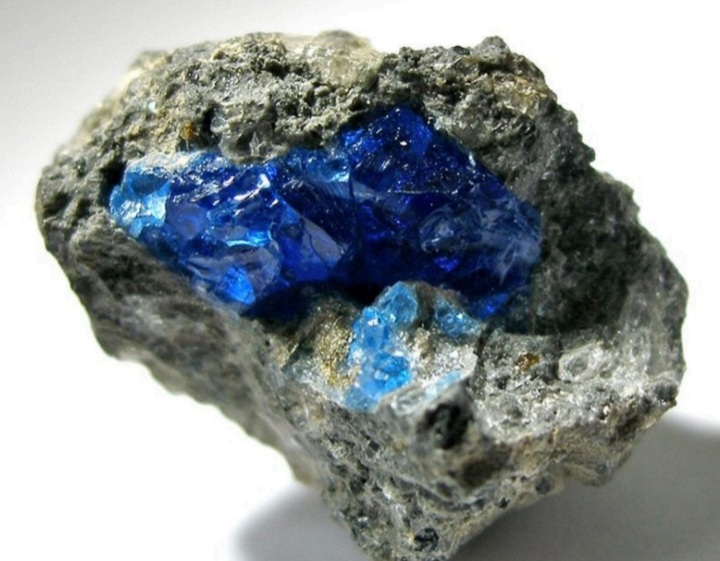Earth Treasures: Hauyne

By Chisom Ibemere
Hauyne also known as hauynite is a tectosilicate sulfate mineral. It is one of the major mineral constituents of lapis lazuli. It is not popular and rarely found and faceted as a distinct gemstone. It is highly prized for its beautiful, deep blue colour, though may come in other hues such as white, gray, green, yellow, red, and pink.
Hauyne belongs to the sodalite mineral group, which comprises of sodalite, hauyne, lazurite, and nosean. These minerals made up Lapis lazuli, a popular gem rock. The gem-quality yellow-green hauyne was discovered in Tanzania in the year 2003 and in 2006, gemologists documented the blue gem-quality hauynes from Afghanistan as well as a blue hauyne-sodalite cabochon from Myanmar.
Hauyne has different colours of Blue, white, grey, yellow, green, pink with a Vitreous to greasy lustre, it has a Hardness of 5½ – 6 and Specific Gravity between 2.44 – 2.5 with an Isometric Crystal System. It is transparent to translucent and may be opaque and brittle.
Hauyne are found in phonolites and related leucite, nepheline-rich, silica-poor, igneous rocks; less commonly in nepheline-free extrusives and metamorphic rocks such as marble.
The main source of facetable hauynes includes areas around Eifel Mountains of Germany which produces gem-quality, blue, transparent crystals. Afghanistan, Myanmar and Tanzania also produce gem-quality material.
